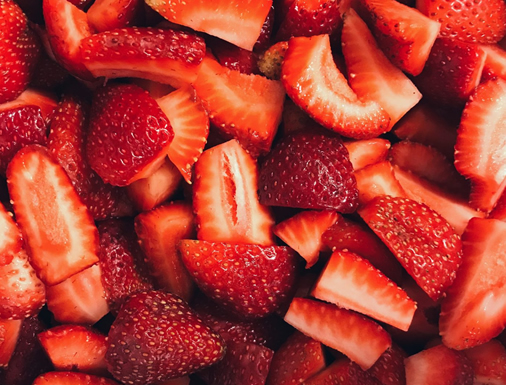
First, let’s get the nitty gritty stuff out the way. WHAT IS A CALORIE? The most important thing to understand here is that we use the measurement of ‘calorie’ (or ‘kilojoule’) to determine the amount of energy that a given food provides. Just like a car’s ‘energy’ is petrol, calories from food provides us with our energy. For example, 1 medium sized pear gives you 96 calories, and one mini box of smarties (17g) gives you 79 calories… WAIT! WHAT?! THERE ARE LESS CALORIES IN A BOX OF SMARTIES THAN IN A PEAR?! Does this mean we can swap out the recommended 2 fruits a day for 2 boxes of smarties AND EAT LESS CALORIES?!
My answer is quite simple: food is food, not a number. More importantly, quality can be more important than quantity.
Technically, we could choose the smarties over the fruit, and even lose weight doing so. But, smarties are filled with refined sugar and have very little nutritional value i.e. it barely nourishes your body. A pear contains vitamins, minerals and fibre which will all provide the body with numerous health benefits. So, while the smarties provide less calories, do you still think it is the healthier choice?
One of the keys to successful and sustainable weight loss is eating the right combinations of foods that help to keep you feeling full and satisfied. An important question to ask yourself is “what will keep me feeling fuller for longer – a medium sized pear or a mini box of smarties?” See what I mean?
There tends to be a disconnect between food and hunger when the focus is on calories. Losing your hunger cues is a big risk of calorie counting. It is like a battle between the calculator and the stomach. Either you eat too little because that’s all you are allowed based on your prescribed calories leaving you feeling hungry, or you eat too much to reach your calorie quota leaving you feeling overly full. Either way, we forget to listen to our stomach.
The next thing to note is that labeling laws can lie. Seriously. There can be a 20% margin of error. That means your 100 calorie snack can actually be 80 calories, or 120 calories. That is just too much maths. Honestly, I don’t have the time or energy to calculate everything that goes into my mouth. That probably sounds a bit odd, since my job consists of helping to improves people’s health by eating better, but I firmly believe this can be done without counting calories.
Counting calories can be a real drag at best, and a dangerous practice at worst. Not only does it get you focusing on numbers instead of enjoying the food you’re eating, it can be a slippery slope from paying attention to calories to obsessing over them. It can also bring about feelings of guilt and shame if we overstep our daily calorie quota.
This is not to say that we shouldn’t be looking at food labels and we most definitely should be able to identify which foods are high in calories and which are low. It is important to know as a benchmark. If you love counting calories and are able to maintain your ideal weight then by all means do it! But, we also need to understand that calories don’t tell the full story. It is important to make all foods fit, know how to listen to our bodies and understand nutrients instead of just calories.
So what can you do instead of calorie count? Keep an eye out for part 2 of this post…
Shani
X





